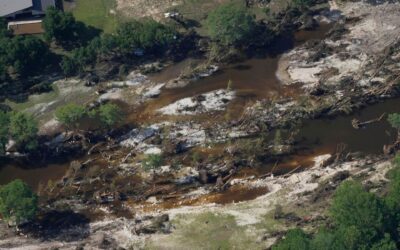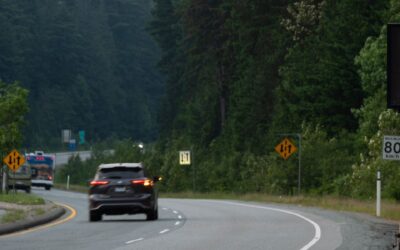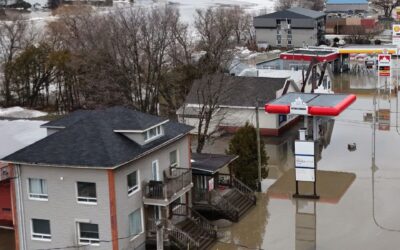Politicians love to plant trees: on the campaign trail, as gifts, or as symbols of urban renewal. Recently, tree planting has leveled up, with the promise that the federal government plans on planting 2 billion trees in the next decade.
Planting more trees looks like an effective and cheap way to reduce Canada’s emissions. As appealing as this may seem, there is still some healthy debate. Where will they all go? How long will they stay alive? Nonetheless, there’s a strong case that some of those trees should find a home in Canada’s growing cities. Urban trees do more than just absorb carbon, they can make our cities more attractive, cooler, and cleaner. In other words, urban trees can have multiple benefits—if we plant them the right way.
A 40-foot tool in the toolbox
Canada is the fastest growing country in the G7 and is expected to welcome an additional 6 to 19 million Canadians by 2050. These new Canadians will almost all live in Canada’s few major cities. This dense concentration of people, government, business, infrastructure, and economic resources makes cities uniquely vulnerable to the growing risks of climate change.
Urban forests offer tools to help our cities cope with climate change impacts. They absorb and retain water during extreme precipitation events limiting flood risk. They cool ambient air and create shade (see for yourself in Quebec’s major cities) limiting urban heat impacts. Mature trees and shrubs protect against soil loss and landslides.
Canada’s urban forests are also a big carbon sink. Canada’s urban canopy, estimated at 27%, sequester 2.5 million tons of CO2 annually, or the equivalent of taking 450,000 Ford F-150s off the road. In addition, the shade offered by urban trees helps reduce our energy needs. In the US, for example, urban forests reduced energy needs by up to 7,2%.
Finally, trees have important physical and mental health benefits. They clean the air by catching pollutants, reducing the risk of death and sickness caused by air pollution. In New York City, for example, the urban forest collects 2,202 tons of air pollutants every year. Trees can make people feel better, too: a study from Denmark showed that children with access to green spaces had a reduced risk of developing psychiatric disorders as adults. Japanese doctors have been prescribing shinrin-yoku (“forest bathing”), and western doctors are starting to follow.
Putting down strong roots
But planting urban forests is complicated. Not only does space for trees have to be found: trees have to be kept alive and healthy, too.
The benefits provided by trees depend heavily on their age and health, not just their quantity. Just like us, trees are going to feel the impacts of climate change. From water stresses, pressures from insects and diseases and increased freeze-thaw episodes, they won’t have it easy. Adding to these growing stresses are the underlaying harsh conditions of the urban context in the form of soil compaction, road salt, lack of space and air pollution.
Here are 3 key elements of urban greening practices to consider for trees to get a head start:
- Diversity: Functional diversity—defined not by the number of tree species in an area, but by the diversity of their biological characteristics, or their ability to resist certain stresses—helps ensure urban forest resilience. No one tree is resistant to all stresses, so we have to minimize exposure by multiplying biological diversity. Like building a balanced investment portfolio, diversity is resilience. Not only do you want to invest in different sectors, you also want different currencies.
- Connectivity and density: Trees need community, and they need interaction. Like people, they can’t thrive as well in isolation. Planting trees in groups can make a big difference. Green spaces also need to be connected to create natural highways for animals and insects to contribute and increase urban forest resilience.
- Care and maintenance: To thrive, trees need more and better quality soil. Urban soils are full of surprises: you can find bricks, wires or bottles, but nutrients are scarce. If we want our trees to outlive us, we need to develop solutions to increase soil fertility. The city of Chicago, for example, found a clever way to turn its sewage into fertilizer. Financing long-term maintenance (e.g. watering, pruning, fertilization) is also key to a thriving urban forest. The city of Austin is testing the carbon offset market with Carbon + credits as a potential financing mechanism.
Accounting for green
It’s up to municipalities to assess natural assets and account for all of the services that urban trees provide, not just carbon capture. When these benefits are tallied, it can provide a strong financial case to municipal CFOs and CAOs that trees are worth the cost.
But how we do it matters. Urban planning and tree planting practices also need to be modernized to make sure we plant investments, not liabilities. Cities can and should partner with private property owners and local NGOs to leverage resources and accelerate tree planting on private land.The Federal government has signaled it’s taking tree planting seriously. The resources that 2 billion trees represent could go a long way in helping greening our cities. The next time you see a tree, why don’t you give it a hug, it just might appreciate it.





